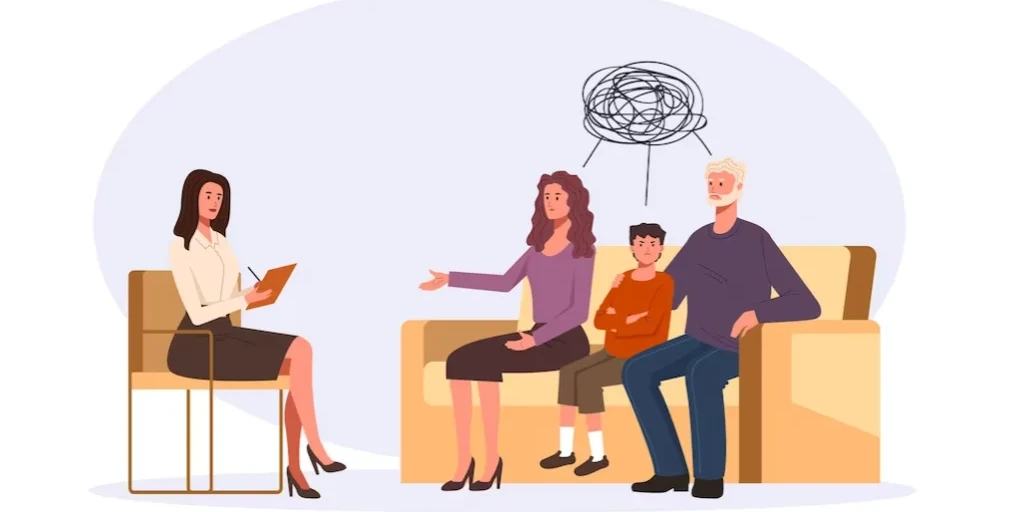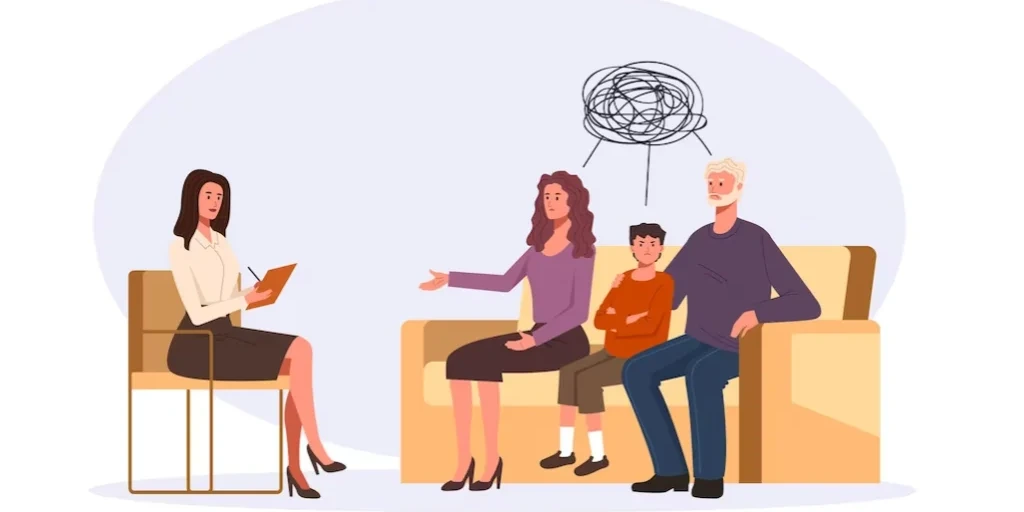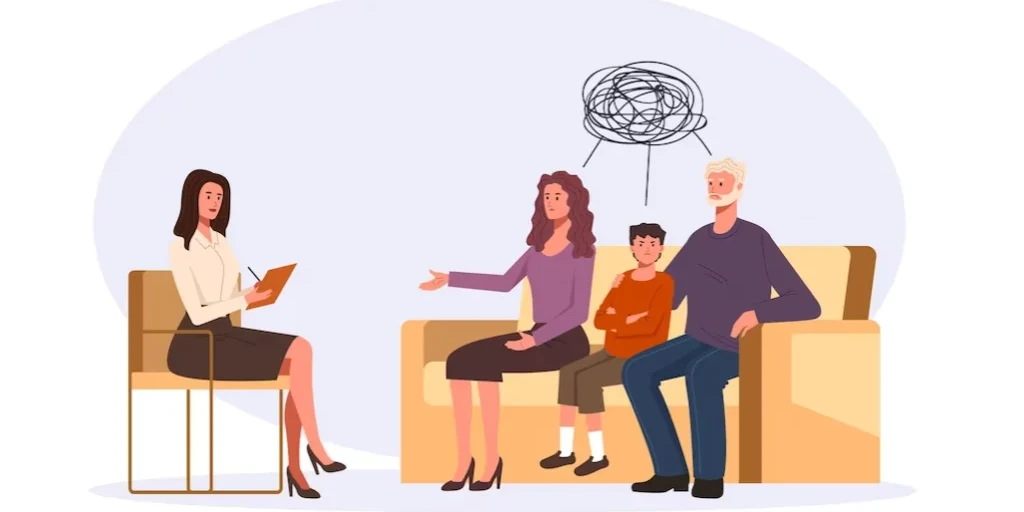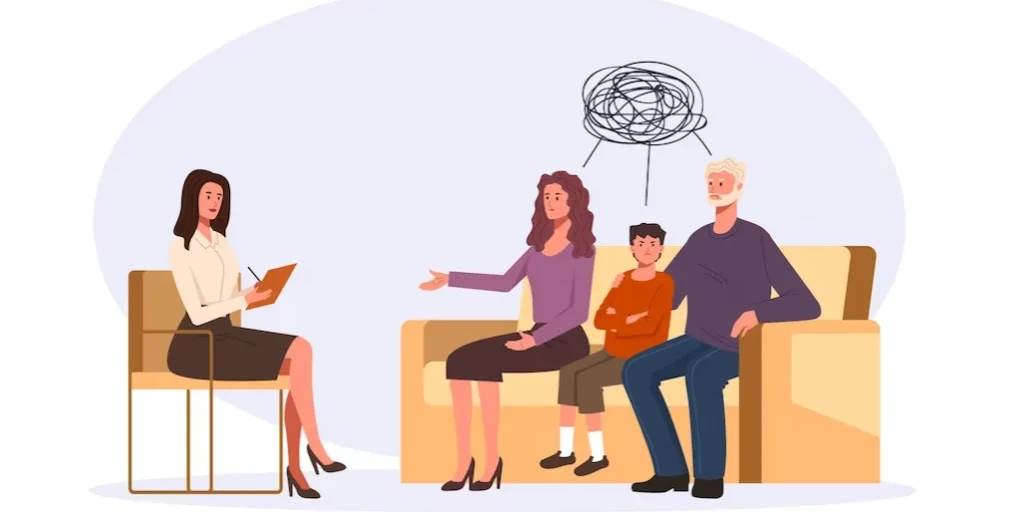24/7 Helpline:
(866) 899-221924/7 Helpline:
(866) 899-2219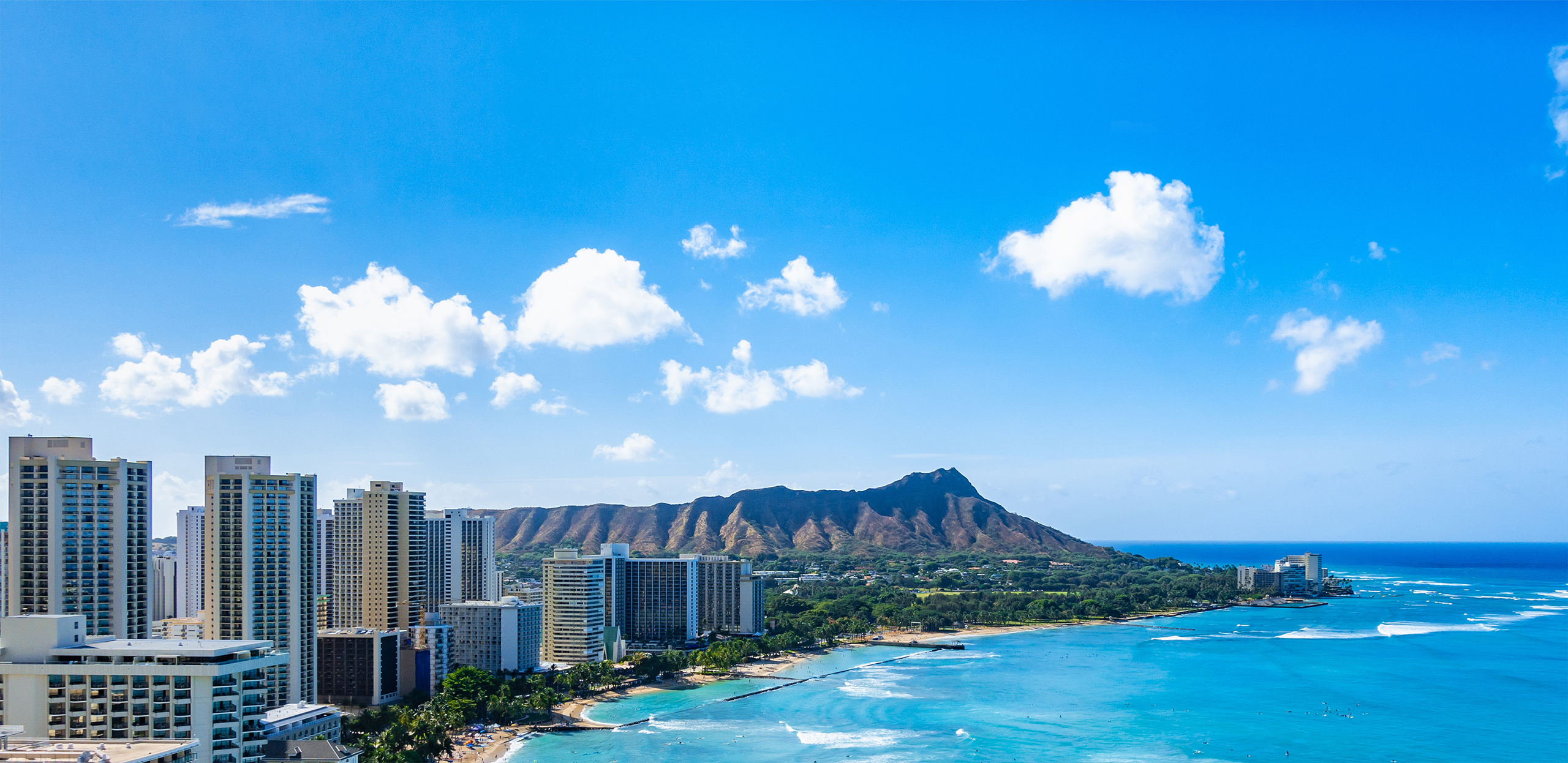
Learn more about Xanax Rehab centers in Hawaii in Hawaii County

Other Insurance Options

Excellus

Sliding scale payment assistance

Molina Healthcare

Regence

Highmark

WellPoint

Medical Mutual of Ohio

Access to Recovery (ATR) Voucher

Premera

Holman Group

Ambetter

CareFirst

MHNNet Behavioral Health

Cigna

BlueShield

American Behavioral

PHCS Network

Carleon

AllWell

MVP Healthcare

Maui Memorial Medical Center – Behavioral Health
Maui Memorial Medical Center - Behavioral Health is an alcohol and drug rehab center in Wailuku, Haw...

Helping Hands Hawaii – Outpatient
Helping Hands Hawaii – Outpatient is a private rehab located in Honolulu, Hawaii. Helping Hands Hawa...

Queens Medical Center – Behavioral Health
Queens Medical Center – Behavioral Health is a private rehab located in Honolulu, Hawaii. Queens Med...

Big Island Substance Abuse Council – Waters of Life School
Big Island Substance Abuse Council - Waters of Life School is a non-profit rehab located in Mountain...

Kaiser Permanente – Behavioral Health
Kaiser Permanente - Behavioral Health, located in Waipahu, Hawaii, provides mental health services t...

The Ohana Addiction Treatment Center
The Ohana Addiction Treatment Center is a world-class alcohol and drug abuse treatment facility on t...

Big Island Substance Abuse Council – Kohala High School
Big Island Substance Abuse Council - Kohala High School is a non-profit rehab located in Kapaau, HI....

Honu House Hawaii
Located in Kailua Kona, Hawaii, Honu House Hawaii offers alcohol and drug rehab services to men and ...

Honokaa Middle School Substance Abuse Program
Honokaa Middle School Substance Abuse Program is a non-profit rehab located in Honokaa, HI. Honokaa ...

Big Island Substance Abuse Council – Hilo High School
Big Island Substance Abuse Council - Hilo High School offers outpatient treatment for individuals wi...

Lokahi Treatment Center
Lokahi Treatment Center provides a highly structured outpatient treatment environment that is center...

Big Island Substance Abuse Council – Hilo Intermediate School
Big Island Substance Abuse Council - Hilo Intermediate School is an adolescent school based treatmen...

Big Island Substance Abuse Council
Big Island Substance Abuse Council offers outpatient treatment for individuals with alcohol and/or s...

Aloha House
Aloha House, located in Makawao, Hawaii provides comprehensive, person-centered behavioral health in...

Big Island Substance Abuse Council
Big Island Substance Abuse Council (BISAC) is a CARF-accredited dual-diagnosis substance abuse rehab...

CARE Hawaii
Honolulu’s CARE Hawaii is a drug and alcohol treatment center that supports adults with substance us...

Hawaii Island Recovery
Hawaii Island Recovery is a CARF-accredited substance abuse rehab in Kailua-Kona, HI for adults. It ...

Big Island Substance Abuse Council
Big Island Substance Abuse Council - Waianuenue Avenue offers outpatient treatment for individuals w...

Action with Aloha on Vineyard
Action with Aloha on Vineyard is a private rehab located in Honolulu, Hawaii. Action with Aloha on V...

The Exclusive Hawaii
Exclusive Hawaii is an accredited, luxury, dual-diagnosis substance abuse treatment center in Hakala...

The Salvation Army – Adult Rehabilitation Center
The Salvation Army - Adult Rehabilitation Center provides men with substance abuse problems with the...

Ohana Makamae
Ohana Makamae is a private rehab located in Hana, Hawaii. Ohana Makamae specializes in the treatment...

Hina Mauka Teen Care – Mililani High School
Hina Mauka Teen Care - Mililani High School is a non-profit rehab located in Mililani, HI. Hina Mauk...

Naval Health Clinic – Substance Abuse
The Naval Health Clinic provides outpatient mental health care to active duty US Navy, Marine Corps,...

Hina Mauka Teen Care – Kailua Intermediate School
Hina Mauka Teen Care - Kailua Intermediate School provides quality substance abuse services to adole...

West Hawaii Explorations Academy Substance Abuse Program
West Hawaii Explorations Academy Substance Abuse Programs, located in Kailua Kona, Hawaii, provides ...

Hina Mauka Teen Care – Aliamanu Middle School
Hina Mauka Teen Care - Aliamanu Middle School provides quality substance abuse services to adolescen...

North Shore Mental Health
North Shore Mental Health is a private rehab located in Kahuku, Hawaii. North Shore Mental Health sp...

Mental Health Kokua
Mental Health Kokua is a private rehab located in Honolulu, Hawaii. Mental Health Kokua specializes ...

Hina Mauka – Kapaa High School
Hina Mauka Teen Care - Kapaa High School provides quality substance abuse services to adolescents. H...

Hina Mauka
At Hina Mauka, they provide inpatient and outpatient substance abuse treatment for adults, treat co-...

Kona Community Hospital – Behavioral Health
Kona Community Hospital – Behavioral Health is a public rehab located in Kealakekua, Hawaii. Kona Co...

Habilitat
Located in Kaneohe, Hawaii, Habilitat is an alcohol and drug rehab center that treats up to 100 indi...

Aloha Psychological Services
Aloha Psychological Services is a private rehab located in Honolulu, Hawaii. Aloha Psychological Ser...

Drug and Alcohol Treatment
Drug and Alcohol Treatment is a public rehab located in Wahiawa, Hawaii. Drug and Alcohol Treatment ...

Kalihi Palama Community Mental Health Center
Kalihi Palama Community Mental Health Center is a public rehab located in Honolulu, Hawaii. Kalihi P...

Alcoholic Rehab Services of Hawaii
Alcoholic Rehab Services of Hawaii is a private rehab located in Honolulu, Hawaii. Alcoholic Rehab S...

Hope Center Ministries – Kailua
Hope Center Ministries–Kailua is a faith-based drug and alcohol rehab for adult men in Kailua, Hawai...

Teen Challenge – Oahu Christian Life School
Teen Challenge - Oahu Christian Life School is a non-profit rehab located in Keaau, HI. Teen Challen...

Hawaii Counseling & Education Center
Hawaii Counseling & Education Center is a private rehab located in Kailua, HI. Hawaii Counseling & E...

Aloha House – Residential Treatment
Aloha House, located in Makawao, Hawaii provides comprehensive, person-centered behavioral health in...

The Exclusive Holistic Rehab Center
The Exclusive Holistic Rehab Center is a private rehab located in Hakalau, Hawaii. The Exclusive Hol...

Big Island Substance Abuse Council – Kona Pacific
Big Island Substance Abuse Council - Kona Pacific is a non-profit rehab located in Kealakekua, HI. B...

Hina Mauka Teen Care – Castle High School
Hina Mauka Teen Care - Castle High School provides quality substance abuse services to adolescents. ...

Hina Mauka Teen Care – Mililani Middle School
Hina Mauka Teen Care - Mililani Middle School is a non-profit rehab located in Mililani, HI. Hina Ma...

Maui Therapy
Maui Therapy offers counseling and therapy to individuals, couples, and families in a convenient loc...

Lokahi Treatment Center
Lokahi Treatment Center provides a highly structured outpatient treatment environment that is center...

Ho’Omau Ke Ola Drug and Alcohol Treatment
Ho’Omau Ke Ola Drug and Alcohol Treatment is a public rehab located in Waianae, Hawaii. Ho’Omau Ke O...

Behavioral Health Hawaii
Behavioral Health Hawaii is a private rehab located in Kihei, Hawaii. Behavioral Health Hawaii speci...

The Exclusive Addiction Treatment Center
The Exclusive Addiction Treatment Center offers a holistic, non-12 step addiction recovery treatment...

Hina Mauka Teen Care
Hina Mauka Teen Care provides quality substance abuse services to adolescents. Hina Mauka Teen Care ...

Coast Community Mental Health
Coast Community Mental Health is a non-profit rehab located in Waianae, Hawaii. Coast Community Ment...

Hina Mauka Teen Care – Kauai High School
Hina Mauka Teen Care - Kauai High School is an outpatient rehab that offers recovery treatment progr...

Ku Aloha Ola Mau
Kū Aloha Ola Mau’s unique mission, born of compassion and science, utilizes the individual’s strengt...

Hina Mauka / Teen Care Kalani High School
Hina Mauka Teen Care - Kalani High School provides quality substance abuse services to adolescents. ...

Hina Mauka Teen Care – Waimea High School
Hina Mauka Teen Care - Waimea High School provides quality substance abuse services to adolescents. ...



























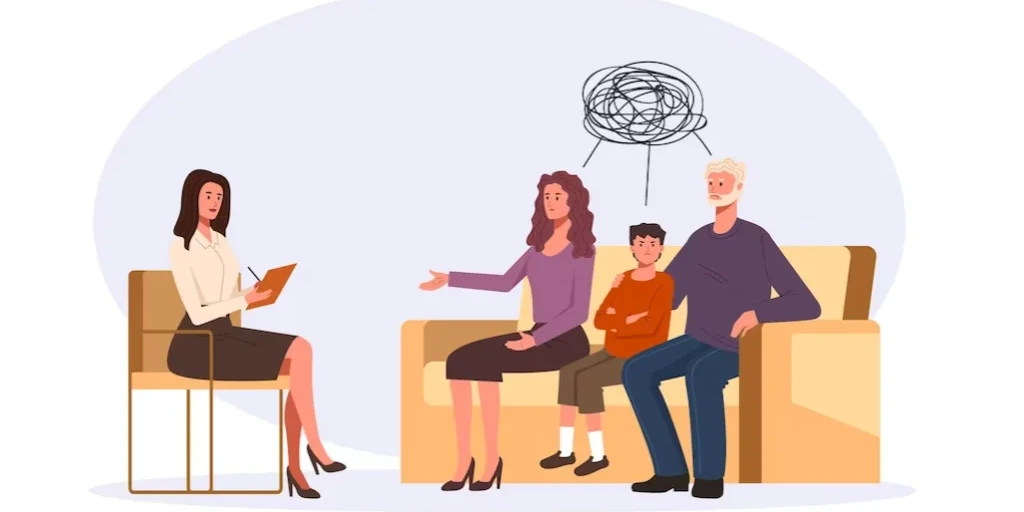





















































Lokahi Treatment Center
Lokahi Treatment Center provides a highly structured outpatient treatment environment that is center...

Big Island Substance Abuse Council – Innovations
Big Island Substance Abuse Council is a non-profit rehab located in Kailua Kona, HI. Big Island Subs...

The Salvation Army
The Salvation Army provides treatment and rehabilitation to help those suffering from substance abus...

Sand Island Treatment
The Sand Island Treatment Center (SITC) is an accredited drug and alcohol rehab in Honolulu, HI. SIT...

New Horizons
New Horizons is located in Haleiwa, Hawaii. New Horizons is the addiction recovery program that you ...

CARE Hawaii – Outpatient
CARE Hawaii – Outpatient is a private rehab located in Lihue, Hawaii. CARE Hawaii – Outpatient speci...

Hina Mauka Teen Care – Kalaheo High School
Hina Mauka Teen Care - Kalaheo High School provides quality substance abuse services to adolescents....

Hina Mauka Teen Care – Kahuku High School
Hina Mauka Teen Care - Kahuku High School offers outpatient treatment for individuals with alcohol a...

Drug and Alcohol Treatment
Drug and Alcohol Treatment is a public rehab located in Kealakekua, Hawaii. Drug and Alcohol Treatme...

Substance Abuse Counseling Center
Substance Abuse Counseling Center is a public rehab located in Honolulu, HI. Substance Abuse Counsel...

Hope
Hope Program have a track record of guiding those who are suffering from the disease of addictions a...

Big Island Substance Abuse Council – Ka Wahi Ola Hou
Big Island Substance Abuse Council - Ka Wahi Ola Hou offers inpatient treatment for individuals with...

Hina Mauka
Hina Mauka provides a comprehensive evidence-based, offender oriented continuum of services to adult...

CARE Hawaii – Adolescent Outpatient
CARE Hawaii – Adolescent Outpatient is a private rehab located in Kaneohe, Hawaii. CARE Hawaii – Ado...

AA – Alcoholics Anonymous
AA – Alcoholics Anonymous is a non-profit rehab located in Lihue, Hawaii. AA – Alcoholics Anonymous ...

Big Island Substance Abuse Council – Keaau Middle School
Big Island Substance Abuse Council - Keaau Middle School is a non-profit rehab located in Keaau, HI....

Hina Mauka Teen Care
Hina Mauka Teen Care provides quality substance abuse services to adolescents. Hina Mauka Teen Care ...

The Salvation Army – Family Treatment Center
The Salvation Army - Family Treatment Center provides substance abuse treatment specifically designe...

Hina Mauka Teen Care – Pearl City High School
Hina Mauka Teen Care - Pearl City High School provides quality substance abuse services to adolescen...

Lokahi Treatment Center
Lokahi Treatment Center provides a highly structured outpatient treatment environment that is center...

North Hawaii Adult Mental Health – Waimea Clinic
North Hawaii Adult Mental Health – Waimea Clinic is a public rehab located in Waimea, Hawaii. North ...

Big Island Substance Abuse Council – Ke Ana La’ahana Public Charter School
Big Island Substance Abuse Council - Ke Ana La'ahana Public Charter School is an adolescent school b...

Hawaii Family Guidance Center
Hawaii Family Guidance Center is a public rehab located in Kealakekua, Hawaii. Hawaii Family Guidanc...

Women In Need
Women In Need is a private rehab located in Aiea, Hawaii. Women In Need specializes in the treatment...

Ku Aloha Ola Mau
Kū Aloha Ola Mau’s unique mission, born of compassion and science, utilizes the individual’s strengt...

Big Island Substance Abuse Council – Keaau High School
Big Island Substance Abuse Council - Keaau High School is a non-profit rehab located in Keaau, HI. B...

Hina Mauka Teen Care – Kamakehelei Middle School
Hina Mauka Teen Care - Kamakehelei Middle School provides quality substance abuse services to adoles...

Big Island Substance Abuse Council – Connections
Big Island Substance Abuse Council - Connections is a non-profit rehab located in Hilo, HI. Big Isla...

Hina Mauka / Teen Care Olomana High School
Hina Mauka / Teen Care Olomana High School is a non-profit rehab located in Kailua, Hawaii. Hina Mau...

Hina Mauka Teen Care – King Intermediate School
Hina Mauka Teen Care - King Intermediate School provides quality substance abuse services to adolesc...

Cocaine Crystals Addiction Services
Cocaine Crystals Addiction Services is a private rehab located in Honolulu, Hawaii. Cocaine Crystals...

Aloha House – Outpatient Services
Aloha House is a private, nonprofit organization established in 1977 to provide services to individu...

Poailani – Outpatient
Poailani – Outpatient is a private rehab located in Kailua, Hawaii. Poailani – Outpatient specialize...

Poailani – Dual Diagnosis
Poailani – Dual Diagnosis is a private rehab located in Kailua, Hawaii. Poailani – Dual Diagnosis sp...

Akamai Recovery Maui
Akamai Recovery Maui offers comprehensive outpatient recovery services to individuals and their fami...

Big Island Substance Abuse Council – Waimea Middle School
Big Island Substance Abuse Council - Waimea Middle School, is a non-profit rehab located in Kamuela,...

Samuel Mahelona Memorial Hospital – Behavioral Health
Samuel Mahelona Memorial Hospital – Behavioral Health is a public rehab located in Kapaa, Hawaii. Sa...

Big Island Substance Abuse Council – Kau High & Pahala Elementary School
Big Island Substance Abuse Council - Kau High & Pahala Elementary School is an adolescent school bas...

Big Island Substance Abuse Council – Kohala Middle School
Big Island Substance Abuse Council - Kohala Middle School is a non-profit rehab located in Kapaau, H...

Volcano School Substance Abuse Program
Volcano School Substance Abuse Program is a non-profit rehab located in Volcano, HI. Volcano School ...

Big Island Substance Abuse Council – Ke Kula O Ehunuikaimalino
Big Island Substance Abuse Council - Ke Kula O Ehunuikaimalino is a non-profit rehab located in Keal...

Big Island Substance Abuse Council – Kua O Ka La
Big Island Substance Abuse Council - Kua O Ka La is a non-profit rehab located in Pahoa, HI. Big Isl...

Army Substance Abuse Program – ASAP
The Army Substance Abuse Program (ASAP) serves active duty, family members, retirees, National Guard...

Big Island Substance Abuse Council – Ka Umeke Ka eo
Big Island Substance Abuse Council - Ka Umeke Ka eo is a non-profit rehab located in Hilo, HI. Big I...

Big Island Substance Abuse Council – Naalehu School
Big Island Substance Abuse Council - Naalehu School is a non-profit rehab located in Naalehu, HI. Bi...

Big Island Substance Abuse Council – Waiakea School
Big Island Substance Abuse Council - Waiakea School is a non-profit rehab located in Hilo, HI. Big I...

Big Island Substance Abuse Council – Hawaii Academy of Arts and Science
Big Island Substance Abuse Council - Hawaii Academy of Arts and Science is a non-profit rehab locate...

CARE Hawaii
CARE Hawaii is a private rehab located in Kailua Kona, Hawaii. CARE Hawaii specializes in the treatm...

Island Integrated Health
Island Integrated Health offers outpatient and intensive outpatient treatment for individuals with a...

U – Turn for Christ Kaua’i
U – Turn for Christ Kaua’i is a private rehab located in Kapaa, Hawaii. U – Turn for Christ Kaua’i s...

Freedom Recovery Services
Freedom Recovery Services is a non-profit rehab located in Honolulu, Hawaii. Freedom Recovery Servic...

Teen Challenge – Big Island Men’s Induction Center
Teen Challenge - Big Island Men’s Induction Center is a non-profit rehab located in Keaau, HI. Teen ...

Bridge House
Bridge House, located in Kailua Kona, Hawaii, offers alcohol and drug rehab treatment that focuses o...

Coalition for a Drug Free Hawaii – Leilehua High School
Coalition for a Drug-Free Hawaii - Leilehua High School is a non-profit rehab located in Wahiawa, HI...

Going Home Hawaii
Going Home Hawaii is a Non - Profit agency located in Hilo, HI. Going Home Hawaii specializes in the...

Bridge House
Bridge House is a private rehab located in Kealakekua, Hawaii. Bridge House specializes in the treat...

Big Island Substance Abuse Council – Pa’auilo Elementary & Intermediate School
Big Island Substance Abuse Council - Pa'auilo Elementary & Intermediate School is an outpatient adol...

Hina Mauka Teen Care – Waimea Canyon Middle School
Hina Mauka Teen Care - Waimea Canyon Middle School provides quality substance abuse services to adol...

Insights to Success
Insights to Success is a private rehab located in Kailua Kona, Hawaii. Insights to Success specializ...

Rehabilitation Assessment and Planning Specialists
Rehabilitation Assessment and Planning Specialists is a private rehab located in Honolulu, Hawaii. R...

North Shore Mental Health
North Shore Mental Health is a private rehab located in Honolulu, Hawaii. North Shore Mental Health ...

International Christian Recovery Coalition
International Christian Recovery Coalition is a private rehab located in Kihei, Hawaii. Internationa...

Leeward Counseling Center
Leeward Counseling Center is a private rehab located in Kapolei, Hawaii. Leeward Counseling Center s...

Hope
Hope Program have a track record of guiding those who are suffering from the disease of addictions a...

Ka Hale Pomaikai
Ka Hale Pomaikai is a private rehab located in Kaunakakai, Hawaii. Ka Hale Pomaikai specializes in t...

CARE Hawaii
CARE Hawaii is a private rehab located in Pearl City, Hawaii. CARE Hawaii specializes in the treatme...

Hawaii Alcohol & Drug Safety Action Program – HADSAP
Hawaii Alcohol & Drug Safety Action Program (HADSAP) provides education courses on the role of drug ...

Hina Mauka Teen Care – Kailua High School
Hina Mauka Teen Care - Kailua High School provides quality substance abuse services to adolescents. ...

Hina Mauka Teen Care – Kapaa Middle School
Hina Mauka Teen Care - Kapaa Middle School provides quality substance abuse services to adolescents....

Army Substance Abuse Program – ASAP
Army Substance Abuse Program – ASAP is a private rehab located in Honolulu, Hawaii. Army Substance A...

Maui Youth and Family Services
Maui Youth and Family Services empower youth and families challenged with behavioral health issues t...

Women In Need
Women In Need is a private rehab located in Lihue, Hawaii. Women In Need specializes in the treatmen...

U Turn For Christ
U-Turn For Christ is a non-denominational ministry designed to help restore to wholeness adult men w...

Big Island Substance Abuse Council
Big Island Substance Abuse Council is a counseling clinic located in Papaikou, Hawaii. Big Island Su...

WorkNet, Restoring Lives, Strenghtening Communities
WorkNet specializes in providing offenders with services in vocational and risk profile assessment, ...

Ahu Waiwai
In Honolulu, Hawaii, Ahu Waiwai is a drug and alcohol treatment center that supports adults with sub...

Hina Mauka Teen Care – W. Radford High School
Hina Mauka is a drug and alcohol rehab facility located in Kaneohe, HI. They provide inpatient and o...

AA – Alcoholics Anonymous – Intergroup
AA – Alcoholics Anonymous – Intergroup is a non-profit rehab located in Kailua Kona, Hawaii. AA – Al...

Action with Aloha
Action with Aloha is a private rehab located in Pearl City, Hawaii. Action with Aloha specializes in...

Oxford House Kalihi Valley
Oxford House Kalihi Valley is a non-profit house located in Honolulu, HI. Oxford House Catalyst help...

Aloha House – Outpatient
Aloha House is a private, nonprofit organization established in 1977 to provide services to individu...

Hina Mauka Teen Care – Highlands Intermediate School
Hina Mauka Teen Care - Aliamanu Middle School provides quality substance abuse services to adolescen...

Big Island Substance Abuse Council – Waiakea Intermediate School
Big Island Substance Abuse Council - Waiakea Intermediate School is a non-profit rehab located in Hi...

RJ in Prision: Huikahi Reentry Circle
RJ in Prision: Huikahi Reentry Circle is a non-profit rehab located in Waialua, Hawaii. RJ in Prisio...

Big Island Substance Abuse Council – Kinoole Street
Big Island Substance Abuse Council - Kinoole Street offers inpatient treatment for women with alcoho...

School Substance Abuse Program
School Substance Abuse Program is a private rehab located in Waikoloa, Hawaii. School Substance Abus...

Big Island Substance Abuse Council – Laukona House
Big Island Substance Abuse Council - Laukona House offers inpatient treatment for individuals with a...

















































































